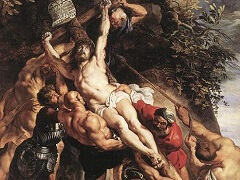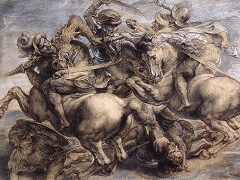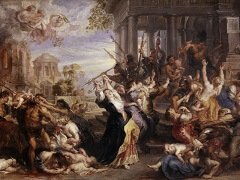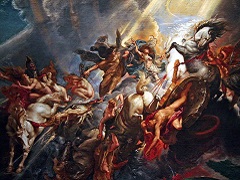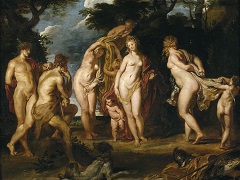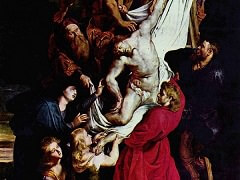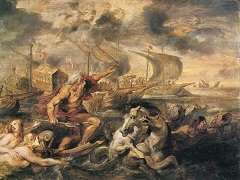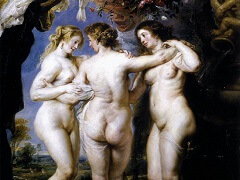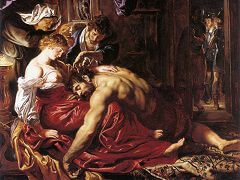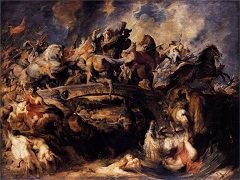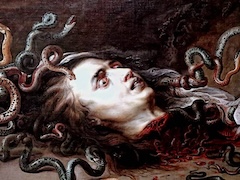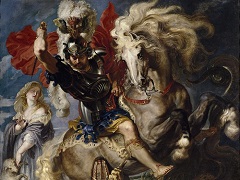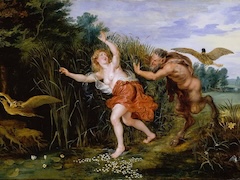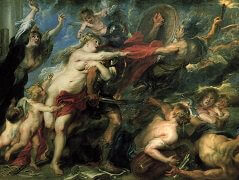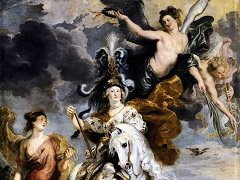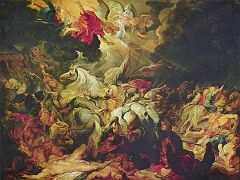Adam and Eve, 1598-1600 by Peter Paul Rubens
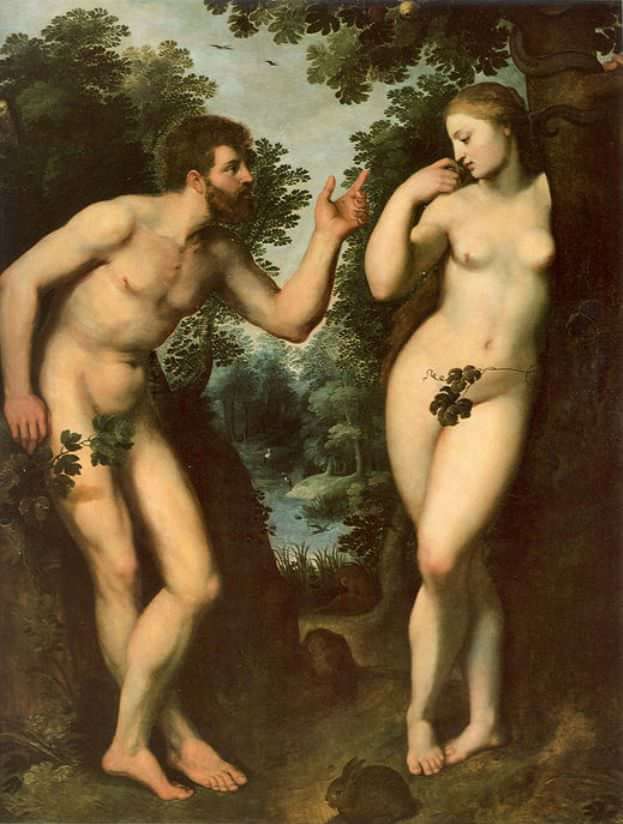
Once he had graduated into the Painters' Guild, Rubens was entitled to set up his own studio, and he may have done so, though as there are early references to works of collaboration with Vacnius the two artists may have maintained a close business relationship. Attempts have been made in recent years to identify Rubens's work in the period 1598-1600; although it is not signed the most plausible as well as the most impressive attribution is the Adam and Eve now in the Antwerp Rubenshuis.
Ever since Durer's famous print of 1504, images of Adam and Eve had been used by northern artists to combine what were thought to bc_the classical canons of physical beauty with the moral message that the parents of mankind were perfect both spiritually and physically before their disobedience. Rubens certainly knew Diirer's engraving, but the poses are derived almost literally from a print of the subject by Marcantonio Raimondi after Raphael.
Rubens gives the figures new life; his Adam is more muscular and more closely observed, and the head is turned out of pure profile to make the face more expressive. Eve is more idealized, perhaps because Rubens's familiarity with the female nude was still limited; she is nevertheless softer and more sensuous than Vacnius's figures. Her raised hand encloses an apple as if she is about to bite it, and the close proximity of Adam's open hand to her arm - a gesture deliberately altered from Marcantonio - focuses the tension of the moment; the tips of the three bent fingers of Adam's left hand arc characteristically highlighted. In the course of painting Rubens redrew the two juxtaposed forearms to make them thicker and more muscular, and in both figures - as elsewhere in his early work - he illustrates a personal observation that with a vertical light source nipples cast defined shadows. The discreet fronds arc placed for propriety by Art, not by Nature or History, for the protagonists arc here still in their last wavering moments of innocence, reflected in the strikingly beautiful paradise landscape, also absent from Marcantonio. The mysterious and intricate background, filled with trees, grassy slopes, water, birds and animals, is of a kind developed in the late sixteenth century by painters, such as Coninxloo and Jan Brueghel, who worked on a much smaller scale. The panel has been cut at the top and the front part of the serpent is therefore missing.
Nothing is known of the early history of this picture, but it may be one of the works described as 'beautiful' which, according to Rubens's mother's will of 1606, he deposited in her house before leaving for Italy in 1600.

